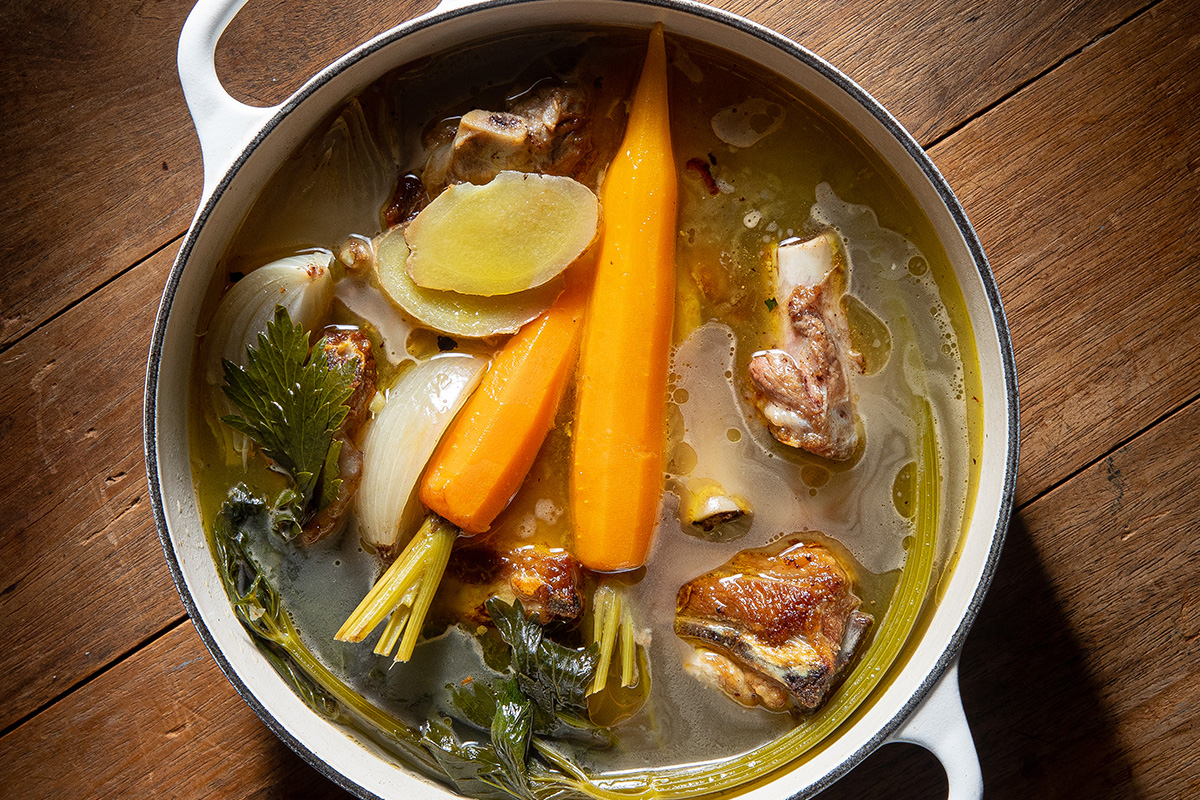Bone broth began life as a humble kitchen ingredient and has evolved into a full-fledged wellness phenomenon, touted as a cure-all for everything from joint pain to radiant skin. Celebrities, influencers, and wellness experts swear by it—but what does science have to say? Before you begin boiling bones for 24 hours, it’s worth exploring what bone broth can (and can’t) do for your health.

At its most basic, bone broth is created by cooking animal bones and connective tissue in water—typically with vinegar, herbs, and vegetables—for 12 to 48 hours. The objective is to pull nutrients such as collagen, amino acids, and minerals out of the bones and into the broth. It can be purchased bottled in the store or home-made, which tends to result in superior flavor and ingredient control.
What’s Really in Bone Broth?
Bones contain calcium, magnesium, and collagen naturally, which is the structural protein of skin, cartilage, and tendons. Collagen is dissolved into gelatin, which comprises amino acids glycine, proline, and glutamine, when bones are cooked for extended amounts of time. These nutrients are associated with skin, joint, and digestive benefits.
But the trade-off is this: the actual nutrient density of bone broth is pretty humble. Studies reveal that very little collagen and minerals find their way into the final product. For instance, bone broth usually delivers less than 5% of your daily requirement of major minerals per serving, and much less collagen than a standard supplement.
Gut Health: Some Promise, Little Proof
One of the most talked-about benefits of bone broth is gut support. Gelatin and glutamine may help maintain the integrity of the gut lining, potentially reducing symptoms linked to “leaky gut.” Some animal studies suggest these compounds can reduce inflammation in the digestive tract, but we’re still waiting on strong human data. For now, the benefits for gut health remain speculative.
Joint Pain and Mobility
Since it has gelatin and collagen, bone broth is usually marketed as a natural solution for healthy joints. Other research showed that collagen supplements can decrease joint pain, particularly in patients with arthritis. But the collagen content of bone broth is variable and far lower than what researchers are using in such studies, so there’s little chance it will provide similar relief.
Skin Benefits: Not a Shortcut to Glowing Skin
Collagen is also promoted immensely as a beauty elixir, particularly for skin elasticity and moisture. There is limited proof that hydrolyzed collagen supplements can enhance the quality of your skin, but drinking bone broth will not deliver a high enough amount to mimic those effects. A diet full of protein, vitamin C, and good fats is a better means of supporting collagen development naturally.
Anti-Inflammatory Potential
The amino acids in bone broth, such as glycine and arginine, have demonstrated anti-inflammatory activity in animal trials. Arginine, for example, enhanced inflammation in asthmatic mice. However, human trials are inconsistent—some of them reveal little or no effect. Although it possibly has some anti-inflammatory effect, it’s not a substitute for established treatments.
A Satisfying, Low-Calorie Snack
If you’re looking for a light, hydrating, protein-rich snack, bone broth does have real value. It can help curb hunger, support hydration, and may play a small role in weight management. Some studies suggest soup-based meals help with satiety and are linked to lower rates of obesity, likely due to their volume and nutrient density.
Sleep and Mental Health Benefits?
There’s also buzz around bone broth’s impact on sleep and brain health. Glycine, one of the amino acids in bone broth, has been shown in small studies to improve sleep quality and promote relaxation. However, the effective dose is much higher than what you’d get from a single serving of broth—you’d need several cups a night to see a measurable effect.
Potential Downsides to Watch For
Bone broth isn’t completely risk-free. Since animal bones can have heavy metals such as lead absorbed into them, the long simmering can leach small amounts into the broth. The science is unclear, but it’s a good idea to have high-quality bones from trusted sources. Store-bought types can be high in sodium, which isn’t the best choice for those with heart or kidney disease.
Some people are sensitive to glutamate—a naturally occurring amino acid in bone broth—that may cause headaches or restlessness. And as with any home-cooked food, inadequate storage or preparation may allow bacterial growth, so make sure to refrigerate or freeze your broth and reheat it well before serving.
How to Make Bone Broth at Home
It’s simpler than you may realize to make bone broth. Keep leftover bones from meals or go to your butcher—they’re frequently inexpensive or even free. Add the bones and water, a splash of vinegar (to assist in pulling out the nutrients), and desired vegetables and herbs. Simmer for a minimum of 12 hours, and then strain and refrigerate for up to four days or freeze for longer storage.
Bone broth is a healthy, soothing addition to your plate, provided it’s made from quality ingredients. It provides hydration, a modest protein boost, and some potentially beneficial nutrients. Don’t rely on it to perform magic, however—it’s not a cure-all, and most of its best-selling health benefits are out in front of the science. As with any fad health food, indulge in it as part of a balanced, nutrient-dense diet.
